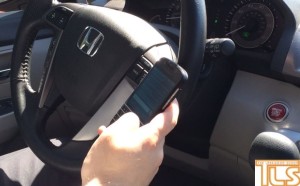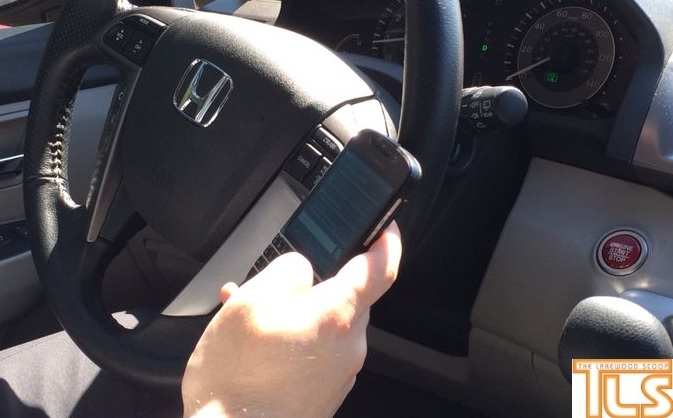 While summer time fun for teens often starts with them getting behind the wheel, that’s where problems can occur. According to AAA, the summer months are the most dangerous time on the road for teen drivers.
While summer time fun for teens often starts with them getting behind the wheel, that’s where problems can occur. According to AAA, the summer months are the most dangerous time on the road for teen drivers.
Car crashes are the leading cause of death for teen drivers, with teens having three times as many fatal crashes as all other drivers based on number of miles driven. Teen crashes affect all motorists: they have the highest rates of crash involvements that result in the death of other people such as passengers, pedestrians and occupants of other vehicles.
According to the New Jersey State Police as of 10:00am on June 2, 2014 there have been 21 fatalities on New Jersey roadways involving drivers and passengers 20 years of age and younger.
“Teens have a greater risk of crashing in the summer because they drive more miles, tend to carry more passengers and drive with less supervision,” said Tracy Noble, spokesperson for AAA Mid-Atlantic. “As a leader in driver safety, AAA urges parents to establish specific rules with their teen drivers, especially during the high-risk summer months.”
AAA Foundation for Traffic Safety analyzed data from National Highway Traffic Safety Administration and noted the following discrepancies between the genders:
- Cell phones. Teen girls are twice as likely as teen boys to use cell phones and other electronic devices while driving. In New Jersey drivers may not use a cell phone (including hands free) or any other hand-held electronic device. Failure to abide by any GDL restriction during operation of a vehicle by a learner’s permit, an examination permit or probationary license holder, who is subject to the GDL requirements, is a violation subject to a $100 fine. See N.J.S.A. 39:3-13.8
- Other distractions. Female teen drivers were nearly 10 percent more likely to be observed engaging in other distracted behaviors, such as reaching for an object in the vehicle (nearly 50 percent more likely than males) and eating or drinking (nearly 25 percent more likely).
- Eyes off the road. Male teen drivers were roughly twice as likely to turn around in their seats while driving, and were also more likely to communicate with people outside of the vehicle.
- Passengers. Overall, 16-year-old males were the most likely to have had teenage passengers in the vehicle at the time of the crash (46 percent). Fatal crash rates for 16- to 19-year-olds increase fivefold when two or more teen passengers are present.
- Gender neutral. Electronic devices were the most commonly observed distracted driving activity for new teen drivers of both genders, and electronic device usage was most common when teens carried no passengers. Currently, 43 states and Washington, D.C., ban texting and driving.
To keep teens safe during these dangerous months and year round, AAA Mid-Atlantic suggests the following tips for parents:
- Eliminate trips without purpose. Teens have three times as many fatal crashes as all other drivers, based on amount of miles driven, and a teen’s crash risk is highest during the first year of solo driving. Limit teens’ driving to essential trips and only with parental permission for at least the first year of driving.
- Limit passengers. Crash rates increase with each teen passenger in the vehicle. In fact, fatal crash rates for 16- to 19-year-olds increase fivefold when two or more teen passengers are present versus when teens drive alone. Also, riding in a vehicle with a teen driver can be risky for teen passengers. Establish passenger limits and restrict teens from riding as a passenger with a teen driver. In New Jersey during the permit and probationary phases only one additional passenger is allowed unless accompanied by a parent or guardian.
- Restrict night driving. A teen driver’s chances of being involved in a deadly crash doubles at night. Many parents limit driving during the highest-risk late night hours, yet they should consider limiting evening driving as well, as more than half of nighttime crashes occur between 9 p.m. and midnight. In New Jersey teens are not allowed to be on the road after 11:01 p.m. and before 5:00 a.m.
- Teach your teens how to drive. Summer offers the perfect opportunity for teens to learn how to drive and the best way for new teen drivers to gain experience is through parent-supervised practice driving, where parents can share their wisdom accumulated over many years of driving. Even after a teen has a license that allows solo driving, parents and teens should continue to practice driving together to help the teen manage increasingly more complex and challenging driving conditions. AAA offers a variety of Driver Training Programs for novice to mature drivers.
- Establish a parent-teen driving agreement. Written agreements help set and enforce clear rules about night driving, passengers, access to the car, and more. AAA offers a parent-teen driving agreement on its teen driver safety website, www.AAA.com/teendriving. The website also provides a variety of additional tools and resources for parents and teens as they progress through the learning-to-drive process.
- Be there. Make sure your teen knows that if they need help, advice or a ride, they can call you at any time. Extend this offer often and let your teen know that you are always available, and that they will not be judged or punished should they need your help. [TLS]


These people are number smart & logic stupid. To call the summer high risk because they tend to drive more is probably the dumbest thing I ever heard. The fact that they drive more miles on a certain day or period of time & therefore more accidents happen during that time doesn’t make it high risk.
if 43 states ban cell phone while driving I’d like to know which 7 states allow it. I’ll move there tomorrow. It shows those local politicians aren’t as dumb as the rest of them.
Agree with #1 %100.
#1 and #2, please, please do move to one of those states, thus removing you from the roads and making the New Jersey streets safer.